第136章 NORTHERN CHILE.CONCLUSION(6)
d'Orbigny's opinion, the Pecten, Ostrea, Turritella, and Hippurite indicate the cretaceous period; and the Gryphaea appears to Professor Forbes to be identical with a species, associated in Southern India with unquestionably cretaceous forms.On the other hand, the two Terebratulae and the Spirifer point, in the opinion both of M.d'Orbigny and Professor Forbes, to the oolitic series.Hence M.d'Orbigny, not having himself examined this country, has concluded that there are here two distinct formations; but the Spirifer and T.aenigma were certainly included in the same bed with the Pecten and Ostrea, whence I extracted them; and the geologist M.Domeyko sent home the two Terebratulae with the other-named shells, from the same locality, without specifying that they came from different beds.Again, as we shall presently see, in a collection of shells given me from Guasco, the same species, and others presenting analogous differences, are mingled together, and are in the same condition; and lastly, in three places in the valley of Copiapo, I found some of these same species similarly grouped.
Hence there cannot be any doubt, highly curious though the fact be, that these several fossils, namely, the Hippurites, Gryphaea, Ostrea, Pecten, Turritella, Nautilus, two Terebratulae, and Spirifer all belong to the same formation, which would appear to form a passage between the oolitic and cretaceous systems of Europe.Although aware how unusual the term must sound, I shall, for convenience' sake, call this formation cretaceo-oolitic.Comparing the sections in this valley of Coquimbo with those in the Cordillera described in the last chapter, and bearing in mind the character of the beds in the intermediate district of Los Hornos, there is certainly a close general mineralogical resemblance between them, both in the underlying porphyritic conglomerate, and in the overlying gypseous formation.Considering this resemblance, and that the fossils from the Puente del Inca at the base of the gypseous formation, and throughout the greater part of its entire thickness on the Peuquenes range, indicate the Neocomian period,--that is, the dawn of the cretaceous system, or, as some have believed, a passage between this latter and the oolitic series--Iconclude that probably the gypseous and associated beds in all the sections hitherto described, belong to the same great formation, which I have denominated--cretaceo-oolitic.I may add, before leaving Coquimbo, that M.
Gay found in the neighbouring Cordillera, at the height of 14,000 feet above the sea, a fossiliferous formation, including a Trigonia and Pholadomya (D'Orbigny "Voyage" Part Geolog.page 242.);--both of which genera occur at the Puente del Inca.
COQUIMBO TO GUASCO.
The rocks near the coast, and some way inland, do not differ from those described northwards of Valparaiso: we have much greenstone, syenite, feldspathic and jaspery slate, and grauwackes having a basis like that of claystone; there are some large tracts of granite, in which the constituent minerals are sometimes arranged in folia, thus composing an imperfect gneiss.There are two large districts of mica-schists, passing into glossy clay-slate, and resembling the great formation in the Chonos Archipelago.
In the valley of Guasco, an escarpment of porphyritic conglomerate is first seen high up the valley, about two leagues eastward of the town of Ballenar.I heard of a great gypseous formation in the Cordillera; and a collection of shells made there was given me.These shells are all in the same condition, and appear to have come from the same bed: they consist of:--Turritella Andii, d'Orbigny, "Voyage" Part Pal.
Pecten Dufreynoyi, d'Orbigny, "Voyage" Part Pal.
Terebatula ignaciana, d'Orbigny, "Voyage" Part Pal.
The relations of these species have been given under the head of Coquimbo.
Terebratula aenigma, d'Orbigny, "Voyage" Part Pal.
This shell M.d'Orbigny does not consider identical with his T.aenigma, but near to T.obsoleta.Professor Forbes thinks that it is certainly a variety of T.aenigma: we shall meet with this variety again at Copiapo.
Spirifer Chilensis, E.Forbes.
Professor Forbes remarks that this fossil resembles several carboniferous limestone Spirifers; and that it is also related to some liassic species, as S.Wolcotii.
If these shells had been examined independently of the other collections, they would probably have been considered, from the characters of the two Terebratulae, and from the Spirifer, as oolitic; but considering that the first species, and according to Professor Forbes, the four first, are identical with those from Coquimbo, the two formations no doubt are the same, and may, as I have said, be provisionally called cretaceo-oolitic.
VALLEY OF COPIAPO.